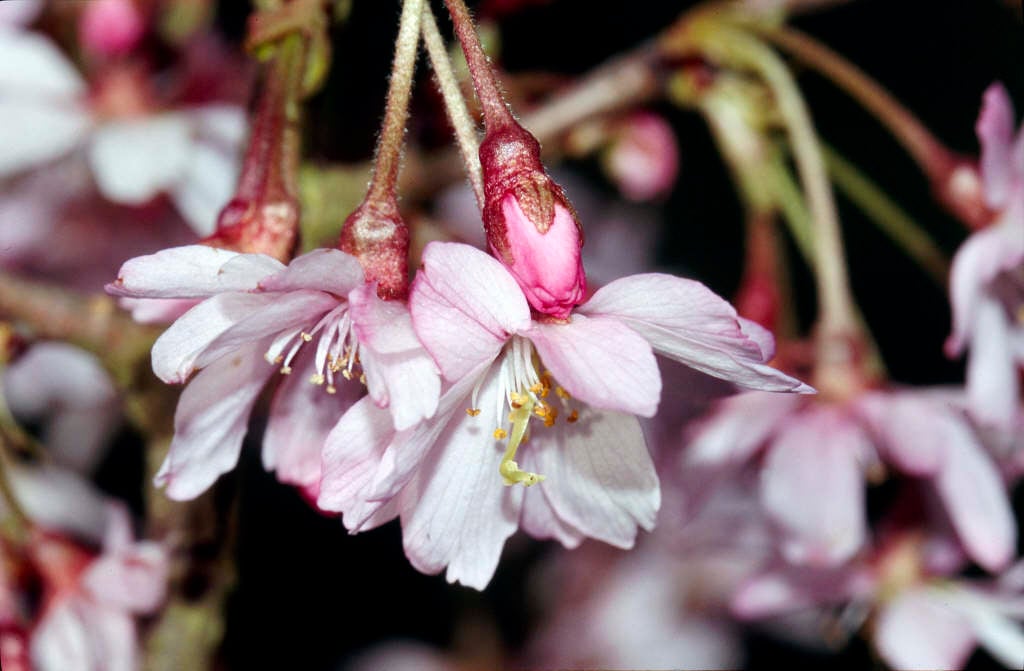Prunus × subhirtella 'Autumnalis Rosea'
winter-flowering cherry 'Autumnalis Rosea'
A small deciduous tree of spreading habit with ovate leaves turning yellow in autumn, and pale pink, semi-double flowers opening during mild weather from late autumn to early spring
Size
Ultimate height
4–8 metresTime to ultimate height
20–50 yearsUltimate spread
2.5–4 metresGrowing conditions
Moisture
Moist but well–drained, Well–drainedpH
Acid, Alkaline, NeutralColour & scent
| Stem | Flower | Foliage | Fruit | |
| Spring | Pink | Green | ||
|---|---|---|---|---|
| Summer | Green | |||
| Autumn | Pink | Yellow | ||
| Winter | Pink |
Position
- Full sun
Aspect
West–facing or South–facing or North–facing or East–facing
Exposure
Exposed or Sheltered Hardiness
H6Botanical details
- Family
- Rosaceae
- Native to GB / Ireland
- No
- Foliage
- Deciduous
- Habit
- Bushy
- Genus
Prunus can be deciduous or evergreen trees or shrubs with showy flowers in spring, and often good autumn foliage colour. Some have edible fruit in autumn, and a few species have ornamental bark
- Name status
Accepted
How to grow
Cultivation
Grow in any moist but well-drained soil. Makes an excellent specimen tree
Propagation
Propagate by seed or semi-hardwood cuttings
Suggested planting locations and garden types
- City and courtyard gardens
- Cottage and informal garden
- Coastal
- Flower borders and beds
Pruning
Pests
May be susceptible to aphids, caterpillars and bullfinches
Diseases
May be susceptible to peach leaf curl, silver leaf, bacterial canker, blossom wilt and honey fungus
Love gardening
Sign up to receive regular gardening tips, inspiration, offers and more
View our Privacy Policy
Get involved
The Royal Horticultural Society is the UK’s leading gardening charity. We aim to enrich everyone’s life through plants, and make the UK a greener and more beautiful place.

